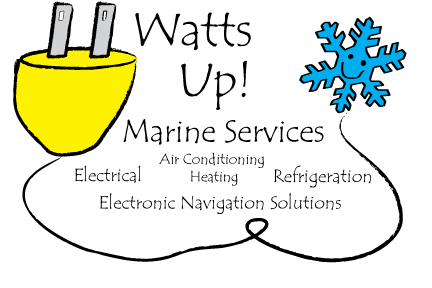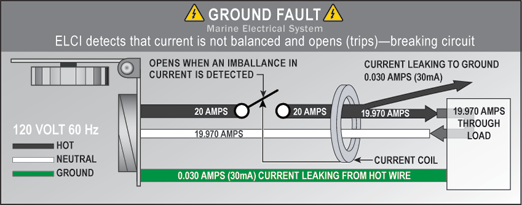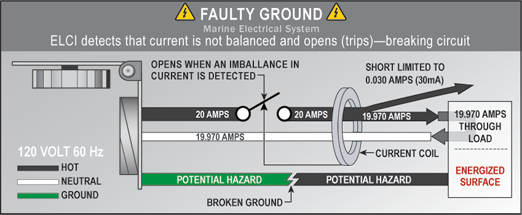In my previous water maker posts, I described the process of installing a Sea Recovery water maker and briefly covered the components that make things work in this self-contained system.
I want to make my own reverse osmosis (RO) system that would use components that could be found anywhere I might be cruising. Most of the major parts of a system can be found at most local distributors or on the internet. The challenge would be automating an off-the-shelf system. But if you understand the system and what it would require to operate, the cost savings you experience building your own water maker versus purchasing one might be worth it.
An additional advantage is the ability to make a fully modular system. On the sailboat that we own, our system has to be modular – we need to put each component in strategic areas to best use the available space. Modularity also allows us to mount the high pressure pump and motor in a location that might be easier on our ears.
Let’s explore the information you need to take the plunge:
Reverse Osmosis 101
As I touched on in my previous post, RO is a separation process that uses high pressure to force a solvent through a membrane that retains the solute (solids, salt and impurities) on one side and allows the pure solvent (fresh, drinkable water) to pass to the other side. In reverse osmosis, the idea is to use the membrane as an extremely fine filter to create drinkable water from salty water.
The membranes used for reverse osmosis have a dense barrier layer in the polymer matrix where most separation occurs. In most cases, the membrane is designed to allow only water to pass through this dense layer while preventing the passage of solutes (such as salt ions). This process requires that a high pressure be exerted on the high concentration side of the membrane, usually 30-250 psi for fresh and brackish water, and 600-1000 psi for seawater. Most water makers designed for yachts currently operate at around 820 psi.
RO is used to reduce dissolved solids from feed waters. Municipalities and industrial facilities use RO permeate as a consistently pure drinking water supply and to transform drinking water to high purity water for industrial use at microelectronics, food and beverage, power, pharmaceutical facilities, and can be used for removing bacteria and organic contaminants. In the production of bottled mineral water, the water passes through a RO water processor to remove pollutants and microorganisms, including the some of the smallest microbes known as Achaea.
Here is a further cut away diagram to help describe the RO membrane function:
In this diagram, the "Feed" is the high pressure output from the pump and the "Back feed" is the pressure that is built up behind the pressure adjustment valve that is installed in the brine outlet line. This high pressure then allows the "Permeate" or fresh water to filter through the membrane while leaving the impurities to continue their flow to the brine outlet.
Looking at the complete system:
There are many components that make the RO system work. Many are very simple items and easily found. The rough diagram below shows the water flow through the system.
 |
| Water maker diagram |
To make things easier, I will break these down into three categories, Pre-RO, RO and Post-RO (Before, During and After) and list each item in the sequence that they will be used.
Pre-RO Systems
Raw Water Supply Pump – drawing sea water into the system
In the system I want to build, the seawater will enter from the raw water thru-hull and go to the supply pump. Be sure to include a seawater strainer just after the thru-hull, thus catching any debris that might damage the pump. This pump will deliver an adequate amount of raw water to the system and maintain 45 psi pressure to the water maker. This pump could be 12vdc, 24vdc, 115vac or 230vac depending on the type of system you would like to use on your boat. In my case, I would use a commercial duty 12vdc rubber impeller pump because I would like to use it for multiple purposes:
- I will add a three-way valve before the pump, it could serve as an emergency bilge pump
- I will put a three-way valve after the pump to use as a saltwater wash-down pump.
Just following the pump, I will add a pressure switch that will control the pump and system pressure to the desired feed pressure. A pressure sending unit will also alert the RO controller to a low feed pressure status and shut down the system for safety.
 |
| Jabsco pump |
Sediment Filters – the initial filtration
As the RO membrane is very sensitive, it’s important to filter out larger particles before the raw water is forced through the membrane. Therefore, the raw water pump will deliver the saltwater to a series of sediment filters. I will use common cartridge water filters, the first filtering to 30 microns and the second to 5 microns. These filters can be purchased online or at a supply store such as Grainger.
For convenience, I would add some simple pressure gauges before and after each filter housing so that I can compare the inlet and outlet pressures. The comparison of each pressure will tell me if the filter element is starting to become clogged.
 |
| Sediment filters |
Oil Separator – keeping petroleum out of the system
Petroleum is harmful to the RO membrane, so it’s extremely important to remove any petroleum products such as diesel, oil or gasoline from the raw water before it enters the water maker system (believe me, any water, anywhere, is full of petroleum). Petroleum will destroy the RO membrane.
 |
| Oil/Water separation filter |
RO Systems – the magic that turns salt water into fresh water.
High Pressure Pump/Motor
This pump/motor combination will supply the high pressure needed to "press" the water solution through the RO membrane. The power needed to drive the high pressure pump is higher than most marine applications, so think carefully about how your boat is able to power it – either via DC or AC. Most 12vdc high pressure pumps require about 26 amps to operate; 24vdc would need 13 amps. This would require most boaters to run the engine while fresh water is being produced. If a generator is available, the choice is simple, and AC is more practical.
There are numerous pump/motor combinations that you can find by simply conducting a quick internet search. I have researched a number of high pressure pumps and have chosen a direct drive Cat Pump model 2SF with a Baldor motor. This pump should deliver 0.17 gallons per minute (GPM) or 10 gallons per hour (GPH), meaning I would have to run my system for one hour each day to produce the fresh water that I usually consume. If I increase the pump size, I could produce more water in a shorter amount of time; it all comes down to power consumption and run time. Soundproofing this component would be a serious consideration due to the noise that it can produce.
 |
| High Pressure Cat Pump |
High Pressure Vessel – the home for your RO membrane
The high pressure pump feeds seawater to the high pressure vessel, which houses the RO membrane. This vessel has three connections or ports: one inlet and two outlets. As the seawater passes through the vessel through the inlet port, the membrane will then separate the fresh water and the remaining brine. The fresh water will exit at the product water port (outlet 1) and the brine will be discharged overboard via the brine port (outlet 2).
There will be a high pressure adjustment valve on the brine outlet (outlet 2), maintaining the correct system pressure needed to force the fresh water through the membrane. A flow meter on both the brine outlet and the product water outlet will allow you to get a good comparison of flows. This comparison will tell you how well the system is working and if the membrane is getting fouled.
I am selecting a high-pressure vessel from HCTI from California. Select a vessel that will offer the correct flow and dimensions that allow generic RO membranes to be used. Common diameters are 2.5", 4" and 8" while lengths come in 14", 21" and 40". For most recreational boaters, one RO membrane will provide all the water they might need, provided the correct sizing has been met; however, vessel/membranes can be arranged in serial or parallel to produce more product water per day.
 |
| High Pressure Vessel |
RO Membrane – the diva of your water maker system
The RO membrane is the key to a water maker’s success. It is also the item that needs the most attention before building your unit, during operation and maintenance after use.
It’s important to choose a membrane size that gives the quantity of product water you need, and to fit inside the installed high-pressure vessel. But as with all things on a boat, bigger means pricier - replacement membranes aren’t cheap.
 |
| RO Membranes |
I repeat: membranes aren’t cheap. So here are some tips on maintaining the longevity and integrity of this component – before, during and after use:
- Usually, the first hour of product water from a new membrane must be discarded
- Keep system pressures below maximum pressures, usually 1000 psi.
- Hydraulic shock can destroy the membrane. Slow changes in pressure must be gradually increased over a 30- 60-second time frame. Control automation can mitigate this risk.
- Once water is added to the membrane, it must remain moist at all times. This means you have to use the water maker regularly, or pickle it (see last bullet).
- Avoid any sudden pressure changes to the high pressure vessel
- Fresh water flush is crucial to longevity of the membrane. Pickling with chemical is needed for long periods without use.
I could go on and on about this topic however there is just not enough time in the day for me to continue writing and most likely for you to continue reading. If you made it this far, congratulations! Join me in the next blog post when I will be discussing
- Automation/Controls - the stuff that makes all the kids play nice together.
- Valves/Water Control
- Fresh Water Flush/Pickling
The RO system that is made "Do-it-yourself" style, can easily surpass the packaged systems that are currently sold. Not only will you leave some money in your pocket but you will gain the knowledge to fix it yourself when the need presents itself.
 Visualize this, you are on a boat in a shipping channel, that has a NMEA 2000 network controlling the navigation, tankage and even the engine throttle and shifting, the network goes down, you are dead in the water. Knowing how the NMEA 2000 network is assembled suddenly becomes very important.
Visualize this, you are on a boat in a shipping channel, that has a NMEA 2000 network controlling the navigation, tankage and even the engine throttle and shifting, the network goes down, you are dead in the water. Knowing how the NMEA 2000 network is assembled suddenly becomes very important.

















